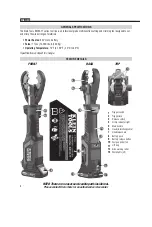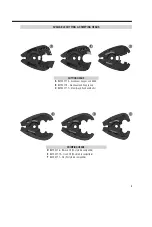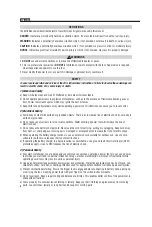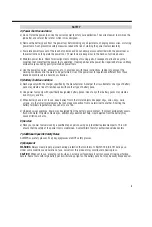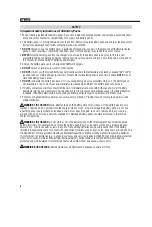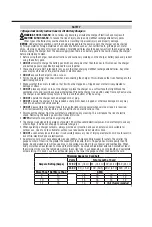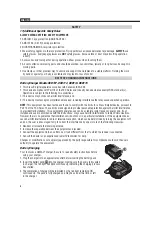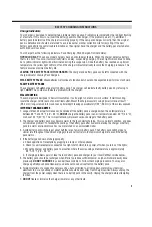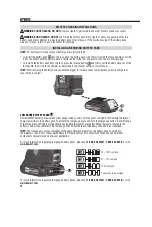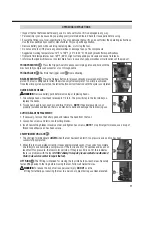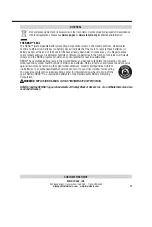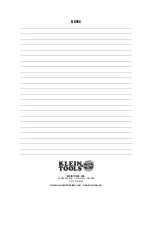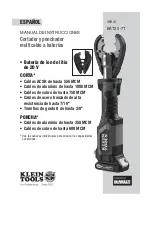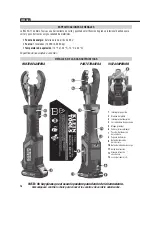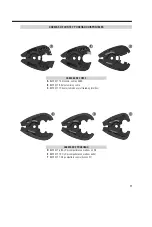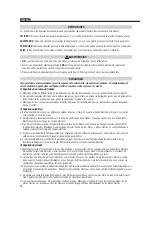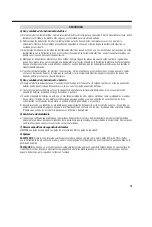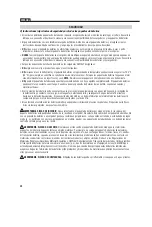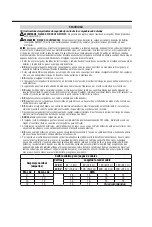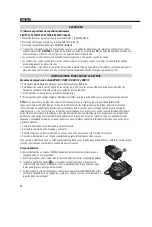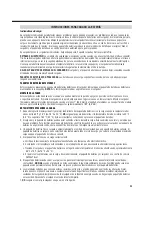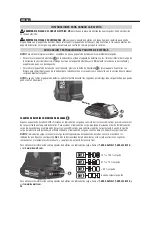
9
BATTERY CHARGING INSTRUCTIONS
Charge Indicators
Your charger is designed to detect certain problems that can arise. Problems are indicated by the red light flashing
at a fast rate. If this occurs, re-insert the battery pack into the charger. If the problem persists, try a different
battery pack to determine if the charger is working properly. If the new pack charges correctly, then the original
pack is defective and should be returned to a service center or other collection site for recycling. If the new
battery pack elicits the same trouble indication as the original, have the charger and the battery pack tested at an
authorized service center.
Your charger has the following indicators: Pack Charging, Pack Charged, Hot/Cold Delay.
HOT/COLD DELAY:
The above model chargers have a hot/cold delay feature. When the charger detects a battery
that is too hot or too cold, it automatically starts a delay, suspending charging. The red light will continue to blink,
but a yellow indicator light will be illuminated during this suspension. Once the battery has reached an optimum
temperature, the yellow light will turn off and the charger will automatically resume the charging procedure. This
feature ensures maximum battery life.
LEAVING THE BATTERY PACK IN THE CHARGER:
The charger and battery pack can be left connected with the
charge indicator showing Pack Charged.
WEAK BATTERY PACKS:
Weak batteries will continue to function but should not be expected to perform as much work.
FAULTY BATTERY PACKS
These chargers will
not
charge a faulty battery pack. The charger will indicate faulty battery pack by refusing to
light.
NOTE:
This could also indicate a problem with the charger.
WALL MOUNTING
These chargers are designed to be wall mountable or to sit upright on a table or work surface. If wall mounting,
locate the charger within reach of an electrical outlet. Mount the charger securely using drywall screws at least 1"
(25.4 mm) long, screwed into wood to an optimal depth leaving approximately 7/32" (5.5 mm) of the screw exposed.
IMPORTANT CHARGING NOTES
1. Longest life and best performance can be obtained if the battery pack is charged when the air temperature is
between 65 °F and 75 °F (18 °–24 °C).
DO NOT
charge the battery pack in an air temperature below 40 °F (4.5 °C),
or above 104 °F (40 °C). This is important and will prevent serious damage to the battery pack.
2. The charger and battery pack may become warm to the touch while charging. This is a normal condition, and does
not indicate a problem. To facilitate the cooling of the battery pack after use, avoid placing the charger or battery
pack in a warm environment such as in a metal shed or an uninsulated trailer.
3. A cold battery pack will charge at about half the rate of a warm battery pack. The battery pack will charge at a
slower rate throughout the entire charging cycle and will not return to maximum charge rate even if the battery
pack warms.
4. If the battery pack does not charge properly:
a. Check operation of receptacle by plugging in a lamp or other appliance;
b. Check to see if receptacle is connected to a light switch which turns power off when you turn out the lights;
c. Move the charger and battery pack to a location where the surrounding air temperature is approximately
65 °F–75 °F (18 °–24 °C);
d. If charging problems persist, take the tool, battery pack and charger to your local DeWALT service center.
5. The battery pack should be recharged when it fails to produce sufficient power on jobs which were easily done
previously.
DO NOT CONTINUE
to use under these conditions. Follow the charging procedure. You may also
charge a partially used pack whenever you desire with no adverse effect on the battery pack.
6. Foreign materials of a conductive nature such as, but not limited to, grinding dust, metal chips, steel wool,
aluminum foil, or any buildup of metallic particles should be kept away from charger cavities. Always unplug the
charger from the power supply when there is no battery pack in the cavity. Unplug the charger before attempting
to clean.
7.
DO NOT
freeze or immerse the charger in water or any other liquid.
Содержание Klein Tool BAT20-7T16
Страница 42: ...42 NOTES NOTAS REMARQUES ...
Страница 43: ...43 NOTES NOTAS REMARQUES ...


